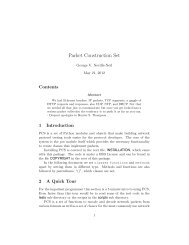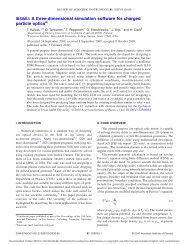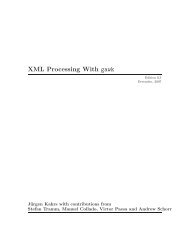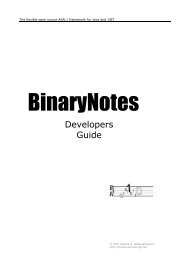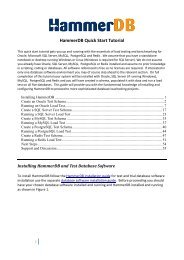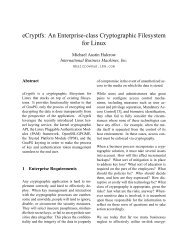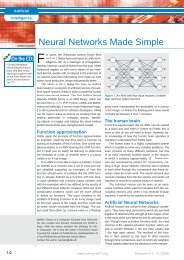System Management Bus (SMBus) Specification, version 2.
System Management Bus (SMBus) Specification, version 2.
System Management Bus (SMBus) Specification, version 2.
Create successful ePaper yourself
Turn your PDF publications into a flip-book with our unique Google optimized e-Paper software.
<strong>System</strong> <strong>Management</strong> <strong>Bus</strong> (SM<strong>Bus</strong>) <strong>Specification</strong> Version <strong>2.</strong>0<br />
4.3.3. Clock low extending<br />
SM<strong>Bus</strong> provides a clock synchronization mechanism to allow devices of different speeds to co-exist on the<br />
bus. In addition to the bus arbitration procedure the clock synchronization mechanism can be used during a<br />
bit or a byte transfer in order to allow slower slave devices to cope with faster masters.<br />
At the bit level, a device may slow down the bus by periodically extending the clock low interval.<br />
Devices are allowed to stretch the clock during the transfer of one message up to the maximum limits<br />
described in the AC specifications of this document. Nevertheless, devices designed to stretch every clock<br />
cycle periodically must maintain the f SMB,MIN frequency of 10 KHz ( f -1 SMB,MIN = 100µs) in order to preserve<br />
the SM<strong>Bus</strong> bandwidth.<br />
1/f SMB,MAX = 100us<br />
T LOW,MIN<br />
SMBDAT<br />
T HIGH,MAX<br />
= 50 us<br />
SMBCLK<br />
Stretch<br />
latency<br />
Periodic<br />
Stretch<br />
Figure 4-7: Periodic clock stretching by a slave SM<strong>Bus</strong> device<br />
Clock LOW extension, or stretching , if necessary, must start after the SMBCLK high-to-low transition<br />
within a T LOW:MIN – TSU:DAT interval. Devices designed to stretch the clock on every bit transfer must<br />
maintain the minimum bus frequency f SMB,MIN of 10 KHz. A slave device may opt to stretch the clock line<br />
during a specific bit transfer in order to process a real time task or check the validity of a byte. In this case<br />
the slave device must adhere to the T TIMEOUT and T LOW:SEXT specifications. Clock LOW extension may<br />
occur during any bit transfer including the clock provided prior to the ACK clock pulse.<br />
A slave device may select to stretch the clock LOW period between byte transfers on the bus, in order to<br />
process received data or prepare data for transmission. In this case the slave device will hold the clock line<br />
LOW after the reception and acknowledgement of a byte. Again the slave device is responsible for not<br />
violating the T LOW:SEXT specification of SM<strong>Bus</strong>.<br />
During a bus transaction the master also can select to extend the clock LOW period between bytes or at any<br />
point in the byte transfer, including the clock LOW period after the byte transfer and before the<br />
acknowledgement clock. The master may need to extend the clock LOW period selectively in order to<br />
process data or serve a real time task. In doing so, the master must not exceed the T LOW:MEXT specification.<br />
SBS Implementers Forum 22



